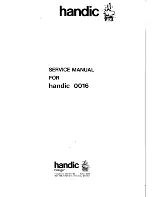
Commissioning and configuration
42
RFM - HF RFID Series
Leuze electronic
Short commands without data
The following commands can be used to carry out direct actions:
•
Command ’+’
activates a read process.
(0x2B)
Command syntax:
<STX>+<CR><LF>
Answer:
<STX>F@0TagtypeSNR<CR><LF>
F
= Telegram flag.
F
= 0: only 1 telegram is output,
F
= 1: multiple telegrams are output
(for more than 256 bytes of data).
@0
is the designator for following serial number.
Tagtype
is the transponder type, see table 7.1.
SNR
is the serial number of the transponder.
•
Command ’-’
Terminates the read process without an answer.
(0x2D)
If no transponder was read, a NO READ (0x18) is output.
•
Command ’V’
Returns the firmware version of the RFM.
(0x56)
Command syntax:
<STX>V<CR><LF>
Answer:
<STX>y1y0m1m0d1d0t3t2t1t0Name<CR><LF>
Where
y
= Year(2);
m
= Month(2);
d
= Day(2);
t
= Tag number(4)
and
Name
= Device type, e.g., RFM 32
•
Command ’R’
Executes a restart and resets the device to factory settings.
(0x52)
Command syntax
<STX>R<CR><LF>
Answer:
<STX>Q2<CR><LF>
and then
<STX>S<CR><LF>
Where
Q2
= Action carried out and
S
= Ready for operation
•
Command ’H’
Stops all actions and executes a software restart.
(0x48)
Command syntax
<STX>H<CR><LF>
Answer
<STX>Q2<CR><LF>
Where
Q2
= Action carried out
•
Command ’I’
Returns the serial numbers of
all
transponders in the field of the RFM.
(0x49)
Function for transponder detection independent of the set transponder
type.
Command syntax
<STX>I<CR><LF>
Answer
<STX>F@0TagtypeSNR<CR><LF>
or
F
= Telegram flag.
F
= 0: only 1 telegram is output,
F
= 1: Multiple telegrams are output
(for more than 256 bytes of data).
@0
is the designator for following serial number.
Tagtype
is the transponder type, see table 7.1.
SNR
is the serial number of the transponder.
















































